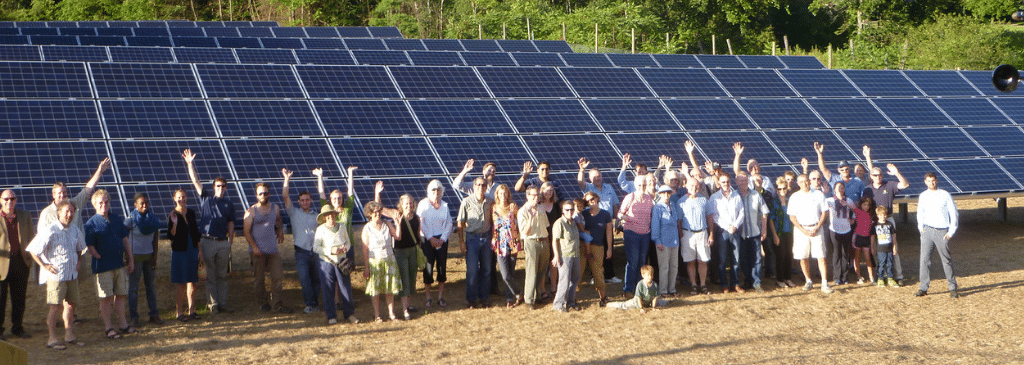For more than a decade, a major story in the United States and other solar markets has been utility opposition to solar. And as many utilities shifted position and embraced large-scale solar in recent years, usually with they caveat that they must control deployment, the story has changed to utility opposition to customer-owned distributed solar.
Community solar does an end-run around this conflict. Both utilities and consumers get a stake in large-scale solar projects at the lower prices which utilities prefer, while still providing their customers with what they want. An added benefit is that utilities can offer solar to customers who do not have suitable roofs or other sites to put solar installations.
As a result, community solar is blooming in states including Minnesota, Massachusetts, Colorado and New York. And last week, Oregon took another step towards becoming the latest state with a community solar presence, with the state’s Public Utilities Commission (OPUC) approving rules for a statewide program.
Many of the details of Oregon’s pending community solar program were set by enabling legislation signed by Governor Kate Brown in March 2016, as part of a bill which set the fifth-most aggressive renewable energy mandate in the nation.
The new program will set a program capacity of 2.5% of each utility’s 2016 system peak, which in aggregate will enable an estimated 160 MW of community solar. Homeowners, renters, schools, business and governments will all be eligible to participate, and Coalition for Community Solar Access (CCSA) estimates that this is enough to serve 22,000 of the state’s households. At least 10% of the total must be set aside for low-income residents.
Advocates who were involved in helped OPUC craft his program stress that there is still work to be done. In particular, a statement by CCSA, Solar Energy Industries Association (SEIA) and Oregon Solar Energy Industries Association (OSEIA) notes that OPUC did not finalize the bill credit that customers will receive on their bill for participating in the community solar projects. Instead OPUC plans to address this issue in the state’s Resource Value of Solar (RVOS) proceeding, which they note “lacks a definitive timeline” but is expected to continue into 2018.
“Following on today’s order, we urge (OPUC) to finalize key details of the program as soon as possible to ensure equitable access to solar for all Oregonians, whether through solar panels on their roof or in their community,” stated CCSA Executive Director Jeff Cramer.
This is not the only step that the state, known for the persistent rainy weather in its more populated Western portion, has taken towards moving to clean energy. Oregon is also one of the few U.S. states to set a mandate for deployment of energy storage.
This content is protected by copyright and may not be reused. If you want to cooperate with us and would like to reuse some of our content, please contact: editors@pv-magazine.com.









By submitting this form you agree to pv magazine using your data for the purposes of publishing your comment.
Your personal data will only be disclosed or otherwise transmitted to third parties for the purposes of spam filtering or if this is necessary for technical maintenance of the website. Any other transfer to third parties will not take place unless this is justified on the basis of applicable data protection regulations or if pv magazine is legally obliged to do so.
You may revoke this consent at any time with effect for the future, in which case your personal data will be deleted immediately. Otherwise, your data will be deleted if pv magazine has processed your request or the purpose of data storage is fulfilled.
Further information on data privacy can be found in our Data Protection Policy.